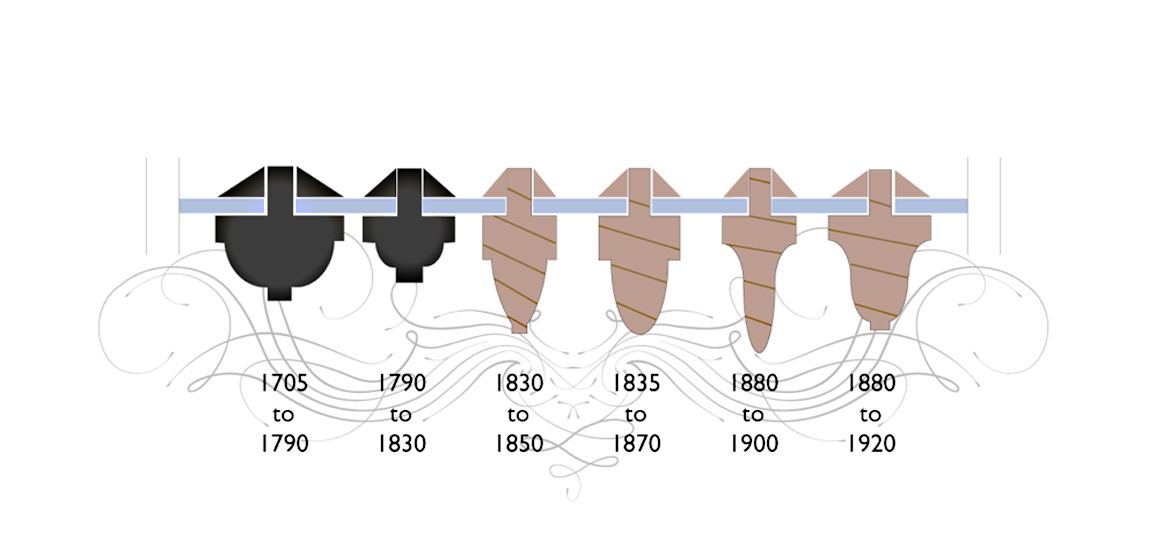Product Insight: History of the True Divided Lite

In their efforts to stay true to the authenticity of historic renovations, our customers often ask for the definition of a True Divided Lite (TDL) and how it differs from a Simulated Divided Lite or a mullion. The answer to this question is simply that a TDL and a mullion separate individual pieces of glass, and an SDL is ‘simulated’ to achieve this look but is mounted on the surface. A mullion carries a load, whereas a TDL should not be used to support an opening. However, these three fenestration components have a rich history that is rooted in technological advances throughout the ages.

Early architecture used mullions to achieve larger openings that did not include glass (think Roman archways). The technique was brought to Europe during the Romanesque Era, where common building materials evolved from stone to wood. Builders began using glass to shield themselves from the environment; however, at that time, glass production was still in its infancy and glass producers were only able to create glass that was about the size of a hand. Glaziers had to develop a method to combine multiple pieces of glass into one larger opening, so they invented the True Divided Lite.

TDLs used muntins to join the smaller panes of glass. These muntins were originally made with cast iron, but were replaced in the early 1800s with, the more forgiving building material, wood. This created a style of window that some now consider an essential architectural element in period buildings, and it is sometimes required for Heritage Building renovations.

The ‘well-cut gemstone’ effect creates reflections at slightly different angles, making the window resemble a diamond. Some bylaws also require a width of 7/8” for the muntin, which was seen primarily in the late 1800s.
The Industrial Revolution introduced new technologies in glass production that allowed larger panes of glass, and the TDL was not needed anymore. As a result, the TDL is becoming a hard expense to justify because of the glass industry’s production requirements. With our current technology of energy-efficient double-paned glass, the width of the muntin is restricted to 1-3/8” to be able to cover up the spacer bar that is set inside. Also, glass companies now have a minimum 4 sq ft charge for sealed units, which can add unnecessarily to the cost of a window if the lites are undersized.
To accommodate the continuing need for the TDL while still being cost-effective, window manufacturers now carry varieties of Simulated Divided Lites (SDL) that are able to achieve the look of the TDL without the added cost. Glass manufacturers have varieties of SDL configurations that they offer, but most true to the TDL look is the muntin bar inside the glass with SDL bars bonded to the surface.

This is fairly close to the original; however, if an area of glass breaks, the entire unit would need to be replaced. With the TDL, only the broken pane would need replacing. TDLs and SDLs can both be used to compliment a design, and they both have their pros and cons. However, SDLs cannot replace the shimmering effect of this historic TDL.
 Hybrid Curtain Wall Systems
Hybrid Curtain Wall Systems Window Wall
Window Wall Lift & Slide Doors
Lift & Slide Doors Bi Folding Doors
Bi Folding Doors Outswing Tilt & Turn
Outswing Tilt & Turn Contemporary Windows
Contemporary Windows Corner Windows
Corner Windows Rakes & Shapes
Rakes & Shapes Pivot Doors
Pivot Doors Front Entry Systems
Front Entry Systems Interior Doors & Millwork
Interior Doors & Millwork